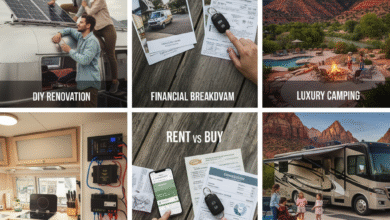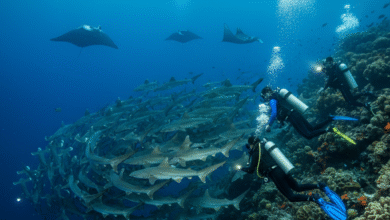How to Visit Venice Responsibly, According to Locals
Visiting Venice responsibly is crucial to preserving its unique culture, environment, and heritage. Locals often emphasize the importance of mindful tourism to ensure the city remains vibrant and sustainable. Here are some tips on how to visit Venice responsibly, according to locals:
1. Avoid Peak Tourist Seasons
- Venice is often overcrowded, especially during summer and major holidays. Visit during the shoulder seasons (spring or fall) to reduce pressure on the city’s infrastructure and enjoy a more authentic experience.
2. Stay in Local Accommodations
- Choose family-run hotels, B&Bs, or guesthouses instead of large international chains. This supports local businesses and helps preserve the city’s character.
3. Respect the Environment
- Venice is fragile, and its canals and buildings are vulnerable to pollution and erosion. Avoid littering, use reusable water bottles, and dispose of waste properly. Refrain from touching or leaning on historic structures.
4. Explore Beyond the Main Attractions
- While St. Mark’s Basilica and the Rialto Bridge are must-sees, venture into lesser-known neighborhoods like Cannaregio, Dorsoduro, or Castello. This helps distribute tourist traffic and supports local shops and restaurants in quieter areas.
5. Support Local Businesses
- Dine at locally-owned trattorias, buy souvenirs from Venetian artisans, and shop at small markets. Avoid chain restaurants and mass-produced souvenirs that don’t contribute to the local economy.
6. Use Public Transportation or Walk
- Venice’s vaporettos (water buses) are an eco-friendly way to get around. Avoid private water taxis unless necessary, as they contribute to canal congestion and pollution. Walking is the best way to explore the city’s hidden gems.
7. Be Mindful of Overtourism
- Avoid contributing to overcrowding by skipping overly popular activities like gondola rides during peak hours. Instead, consider alternative experiences like rowing lessons with local rowing clubs.
8. Learn About Venetian Culture
- Take time to understand Venice’s history, traditions, and challenges. Respect local customs, and try to learn a few Italian phrases to connect with residents.
9. Avoid Cruise Ships
- Many locals oppose large cruise ships, which contribute to pollution and overcrowding. If you must arrive by cruise, consider staying longer in Venice to support the local economy rather than just passing through.
10. Be a Responsible Visitor
- Keep noise levels down, especially in residential areas. Avoid swimming in the canals or engaging in behavior that could damage the city’s delicate ecosystem.
11. Participate in Sustainable Tourism Initiatives
- Look for tours and activities that prioritize sustainability and cultural preservation. Some organizations focus on eco-friendly practices and educating visitors about Venice’s challenges.
12. Leave No Trace
- Take only photos and leave only footprints. Respect the city’s beauty by not defacing buildings, bridges, or public spaces.
Keep walking.
For Melissa Conn, of the preservation nonprofit Save Venice, the antidote to the crush around Piazza San Marco is a short stroll away in the Castello district, where butchers, bakers, and small restaurants abound. “Wander into the churches, come see the artworks,” she says, naming San Giovanni in Bragora as a standout, along with the historic Scuola di San Giorgio degli Schiavoni. “Entrance fees are low, and your money helps preserve these spaces.”
Shop smart.
Skip the glass trinkets and instead visit Archivio CameraPhoto Epoche, a gallery and boutique overseen by photographer Vittorio Pavan. It holds more than 300,000 black-and-white images taken in Venice, from the postwar years to the 1980s. “It’s a private collection, but it belongs to all of us,” Romanelli says.
:max_bytes(150000):strip_icc():format(webp)/1024px-Venedig_s_maria_della_salut-593f09805f9b58d58aa8606d.jpg)
Sail away.
Take a vaporetto, or water bus, to the northern islands of Burano, Mazzorbo, and Torcello. “People there are still attuned to the rhythms of nature and season,” says author and photographer Valeria Necchio, who works with Inside Venice, a tour company. Many visitors stop by for a few hours to see Burano’s famously colorful houses, but Necchio recommends spending a few nights at Casa Burano, an albergo diffuso with a variety of contemporary-chic rooms and suites set across five buildings.
Think small.
Fondazione Querini Stampalia is “one of the museums most loved by Venetians,” says tour guide Luisella Romeo. “The mix of Neoclassical and Rococo is beautifully presented, and there’s an incredible art collection,” Romeo notes. “It also has the most beautiful garden
in Venice.”
Meal plan.
“Your chances of eating better improve the farther away from Piazza San Marco you stray,” says Jill Weinreich Luppi, a 30-year resident of Venice who works in the arts. One of her favorites is Nevodi, in Castello. But don’t count on getting a same-day table at any of the best spots. “Venice requires that you do your homework — and that means reserving in advance, even in the so-called ‘off-season.’ ”
Get real.
“During the week, Venice is a city that works, that builds,” says Guido Jaccarino, director of UnisVe, a union of Venetian artisans and restorers. “But those workers disappear on weekends and are replaced by tourists.” That’s why he recommends avoiding weekend trips. Midweek, it’s easier to fall into the rhythms of a neighborhood by stopping by the same café or bar every day for an espresso or aperitivo.



